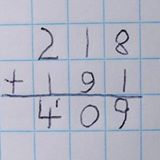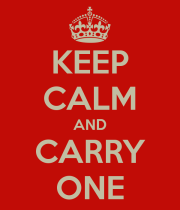There are several distinct questions here.
1. Should the standard algorithm be taught at all?
2. Given an affirmative answer to 1, when should it be taught?
3. Given an affirmative answer to 1, should it be the only algorithm which is taught?
For me the answers are:
1. Most certainly
2. Whenever the student can actually comprehend what is going on.
3. Definitely not.
Here are my reasons:
**1 - should the algorithm be taught at all?**
It is incredibly important to understand algorithms. This algorithm is very efficient, and is one of the most useful algorithms I can think of. Personally, I think that algorithms should be stressed a lot more than they are currently. In particular, I think that computer programming should become just as standard as mathematics is now. It is just as useful, builds careful reasoning, and educates people about how computers really work, which is fundamental to how the world works.
I also think that the natural numbers are really fundamental to mathematics, and understanding how the basic operations on natural numbers work in a place value system is pretty important. Knowing an algorithm for addition helps with this a lot.
**2 - When should it be taught?**
It is possible to train a student to perform the addition algorithm without understanding what is going on at all.
This has certain advantages. They are able to perform well on certain kinds of tests. Knowing how the algorithm works might help them to later understand why the algorithm works.
The major disadvantage is that it gives the impression that mathematics is mindless rule following, and this is done at such an early age that children might never recover. This is enough of a disadvantage for me that I am okay waiting, and approaching this in a slow and cautious manner. I think that as prerequisite to being taught the algorithm the student should
a. Understanding how to count.
b. Understand what addition is: they should understand that 3+4 is the number of things you get if you combine 3 and 4 things together.
c. Understand the place value system. They should know how many objects the symbol 10 represents. They should know that 57 means 5 10s and 7 ones. They should understand that 100 means 10 10s. Without understanding these basic things, even writing the number 53 has no real meaning. So we should not expect them to do 53+89.
d. Struggle with the problem on their own a bit. Children should realize that the standard algorithm is fantastically clever, and that it solves an important problem. Spending some time struggling with this problem on their own is needed to have an appreciation for the problem. Some children will only be able to solve addition problems in an ad hoc way, and will get inconsistent results. Other students might develop algorithms of their own, which is wonderful because they get to feel the thrill of mathematical creation.
e. At this point the algorithm can be introduced. It will have meaning to the students, and they can understand both how and why it works.
**3. Should it be the only algorithm which is taught**
I think it is essential to teach more than one algorithm. If only one is taught, it seems like the algorithm defines addition, rather than just being one way to compute a sum. This is also a great early opportunity to discuss the advantages and disadvantages of one algorithm over another. I still think that the standard algorithm should be the one which is drilled most often, but discussing other algorithms is a useful way to force students to think about why these algorithms work.
Here is an algorithm with a lot of merit:
568
+479
——
17 <— sum of the 1s
130 <— sum of the 10s
900 <— sum of the 100s
——
7 <— sum of the 1s
40 <— sum of the 10s
1000 <— sum of the 100s
——
1047 <— final answer
This algorithm is a lot windier than the standard algorithm, but has some pedagogical advantages. Instead of thinking about adding 6 and 7, with this mysterious 1 that somehow pops over from the 1s column, here you think of adding 60 to 70 (realizing the meaning of those 6 and 7), and you can clearly see that the “carry” is an extra 10 coming from the sum of the 1s. A fun thing to think about is how many iterations are needed for the algorithm to terminate.
I actually think that this is a better “first algorithm” to teach. The standard algorithm could be developed as a “shorthand” for this one.



Re: Keep Calm and Carry One
I’m okay with this algorithm being phased out, despite it being what I learned and what I would probably default to given a series of sums and pen and paper. In my personal opinion, “carry the one” is not the most mathematically transparent algorithm, especially to very young students.
I’m purely speculating here, but it seems to me that the column addition algorithm became prominent despite sacrificing mathematical transparency because the gain was speed and efficiency of written space used.
With the prevalence of calculators available, I don’t think the trade-off is worthwhile anymore. I think everyone should be taught pen-and-paper algorithms for two reasons: 1) the unlikely event that a calculator is not available, and (more importantly) 2) as a foundational step towards mathematical fluency. I think that column addition is a clumsy step that deserves to go the way of short division and multiplication by adding logs: as a curious but outdated method.